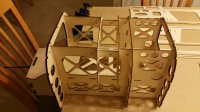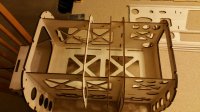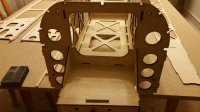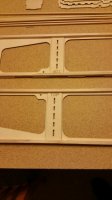Kevin-Young
70cc twin V2
I thought I would start a build thread on the new JTEC Radiowave 3.1m MX2 that I am building for myself. This build is of the first production version of the MX2 so part of the reason for building it is to make sure that everything goes together as well as all of our other aircraft.
As many of you know the 3.1m and 2.8m MX2's were designed by Jerry Hailey, Jason Shulman and myself. We have been flying the prototype version since last May and have been thrilled with how it has performed. Here are some of the specs on the airplane.
Specifications:
Wing Span: 123 inches (3.1m)
Wing Area: 2710 sq inches
Fuselage Length: 113 Inches
Engine: 150cc - 220cc
3.1m MX2 Competition Series Builders Kit Features:
Interlocking Fuselage Design for self aligning & extremely quick building
Includes balsa & hardwood materials needed for construction
Premium Fiberglass Cowl & wheel pants
Plug In Foam Wings
Plug In Foam Stabilizers
Foam Vertical Fin & Rudder
Designed For Canister Style or Tuned Pipe Exhaust Systems
Designed to Accommodate 3 Servos Per Wing
Designed to Accommodate 2 Servos Per Elevator Half
Built-in Rudder Tray For Pull-Pull Setup
Optional Bays for Rudder Servos In The Tail
Motor Box with firewall locations for DA-150/170 or DA-200
Carbon Fiber Wing Tube & Tail Tube
As many of you know the 3.1m and 2.8m MX2's were designed by Jerry Hailey, Jason Shulman and myself. We have been flying the prototype version since last May and have been thrilled with how it has performed. Here are some of the specs on the airplane.
Specifications:
Wing Span: 123 inches (3.1m)
Wing Area: 2710 sq inches
Fuselage Length: 113 Inches
Engine: 150cc - 220cc
3.1m MX2 Competition Series Builders Kit Features:
Interlocking Fuselage Design for self aligning & extremely quick building
Includes balsa & hardwood materials needed for construction
Premium Fiberglass Cowl & wheel pants
Plug In Foam Wings
Plug In Foam Stabilizers
Foam Vertical Fin & Rudder
Designed For Canister Style or Tuned Pipe Exhaust Systems
Designed to Accommodate 3 Servos Per Wing
Designed to Accommodate 2 Servos Per Elevator Half
Built-in Rudder Tray For Pull-Pull Setup
Optional Bays for Rudder Servos In The Tail
Motor Box with firewall locations for DA-150/170 or DA-200
Carbon Fiber Wing Tube & Tail Tube





